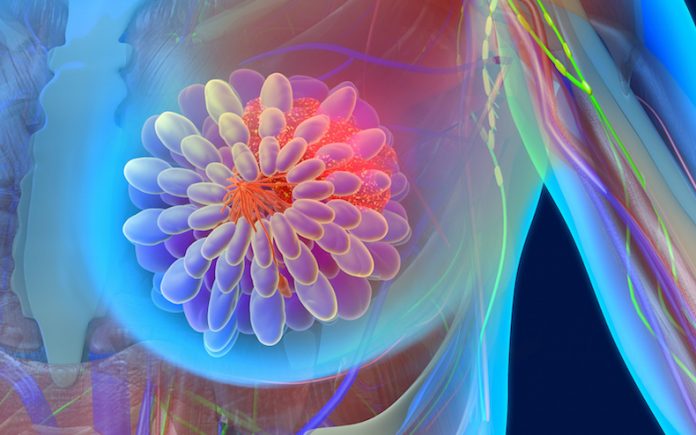
New research out of the Scripps Research Institute is showing early promise in being able to address treatment for a form of cancer which, to date, has no targeted therapies—HER2-negative breast cancer.
The study, published in the Journal of the American Chemical Society, from the research lab of Matthew D. Disney, Ph.D., details how his group effectively shifted three different cancer cell lines from HER2-negative status to HER2-positive status by using a selective micro-RNA (miRNA) binding molecule the group calls TGP-515.
While it is early days and much work remains to be able to bring such a therapeutic strategy to patients, the findings present tantalizing evidence that in the future a cancer’s genotype may not be a limiting factor in the kinds of therapies available to treat it.
“It’s possible that precision medicines like Herceptin can be made available to a wider group of people by altering gene expression with therapeutics that bind not to the proteins but to noncoding RNA,” Disney said.
About 20 percent of people diagnosed with breast cancer have the HER2-positive mutation. While it is associated with faster growing, more aggressive cancers, it has been effectively treated for the past 20 years with Herceptin. Since its introduction, 10-year disease-free survival rates for the HER2-positive breast cancer subtype have increased significantly to 84 percent.
Disney’s team designed their compound by using a mathematical system he developed called Inforna. The compound rendered the cancer cells vulnerable to both Herceptin (trastuzumab) and Kadcyla (ado-trastuzumab emtansine), while leaving healthy breast cells unaffected.
“This study is proof of concept for the strategy of creating sensitivity to a drug where one otherwise wouldn’t exist,” Disney noted. “It also validates the notion that transcription of genes can be modulated via small molecule compounds engineered to bind to relevant noncoding RNA. This means that supposedly untreatable diseases may, one day, be readily treatable. There is a long way to go for this to get to patients, however.”
According to Matthew G. Costales, study author and a graduate student in the lab, the group faced a number of challenges. Using Inforna, the team identified unintended targets that needed to be blocked and then used the information from the system to engineer a molecule with the appropriate binding properties.
Inforna first identified a compound that bound to two different miRNAs—885 and 515—a property that had the potential to cause problems. After further refinement, the researchers created a molecule that was selective for one miRNA, but not the other, and eventually designed the molecule that selected only for the desired miRNA, 515. This resulted in the cells producing increased HER2 levels and, as a result, making them sensitive to the targeted drugs.
“The demanding synthetic, biochemical, and cellular experiments described in this paper were three years in the making,” Costales said. “It required tremendous effort, but the work is by no means complete. I am looking forward to future work guided by the lessons we learned here.”
Disney also credited Scripps Research chemist Alexander Adibekian, Ph.D., with helping understand the mechanisms of action of their compound, TGP-515, and demonstrating its selectivity.
And while the researchers have made a notable first step to making compounds that can boost HER2 sensitivity, Disney cautioned that significant work still lies ahead to making this a reality.











